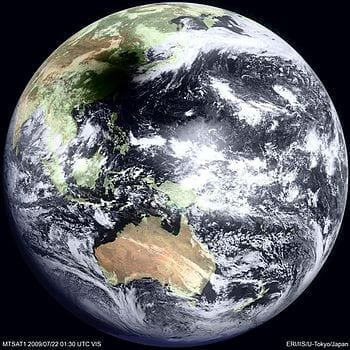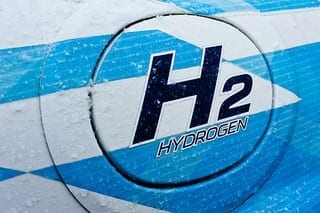
A private San Francisco start-up has launched the largest-ever ensemble of satellites
The constellation of Earth-imaging satellites launched yesterday—28 individual sputniks, called “Doves,” each about the size of its namesake and weighing in at a svelte five kilograms—is on its way to the International Space Station. If all goes well, by the end of the month “Flock 1,” as the group is called, will distribute its nanosatellites in Earth orbit, the better to photograph the complete surface of the planet at high resolution 365 days a year. The satellites will provide near-continuous pictures of Earth’s surface at a resolution of three to five meters per pixel.
Planet Labs, the San Francisco start-up that built Flock 1, is one of a growing group of companies and governments launching very small satellites. As their cost and size have plummeted, partly in response to the availability of standardized off-the-shelf components, nanosatellites such as CubeSat, have opened up unprecedented opportunities in remote sensing. Unlike traditional Earth-imaging satellites, which cost millions to build and launch, each of Planet Labs’ diminutive sky cameras, which in its predeployed state resembles a child’s kaleidoscope, comes in at a fraction of that cost.
Planet Labs plans to be the first to capture high-resolution whole-Earth images nearly continuously. (Full disclosure: one of us—Boettiger—serves without remuneration as an advisor to Planet Labs.) Test satellites launched in April and November demonstrated that the company’s engineers can accurately position the orbiters and capture a continuous stream of images with a resolution of three to five meters—fine enough to distinguish individual trees in a rainforest, but not sharp enough to identify a person tending his garden. Whereas most of the nine spectral bands of imagery captured by the National Oceanic and Atmospheric Administration’s Landsat 8, launched in 2013, for example, are delivered at 30-meter resolution, other commercial providers of remote-sensing images, such as Skybox Imaging and BlackBridge (formerly RapidEye), have the capability to deliver much higher resolutions—as fine as one meter per pixel. These companies even offer features such as high-resolution, real-time video. But these satellites are tasked with photographing specific targets, meaning customers rent the use of a satellite (much as one might hire a photographer) to capture detailed images of very specific patches of the globe. Planet Labs executives say that continuous whole-Earth images would have the potential to serve many purposes simultaneously, from a single set of data. “We’ve become used to having imagery of the entire Earth,” says Tim O’Reilly, of O’Reilly AlphaTech Ventures, one of Planet Labs’s investors. “What we haven’t yet understood is how transformative it will be when that imagery is regularly and frequently updated.”
The Latest on: Nano Satellites
[google_news title=”” keyword=”Nano Satellites” num_posts=”10″ blurb_length=”0″ show_thumb=”left”]
via Google News
The Latest on: Nano Satellites
- Global 3D Printed Satellite Market Report 2024 - Maxar Space Systems, Boeing, 3D Systems, Northrop Grumman and Fleet Space Technologies Dominateon April 30, 2024 at 2:35 am
Dublin, April 30, 2024 (GLOBE NEWSWIRE) -- The "Global 3D Printed Satellite Market by Component (Antenna, Bracket, Shield, Housing and Propulsion), Satellite Mass (Nano and microsatellite, small ...
- Which Iron Man Armor Is The Most Powerful?on April 29, 2024 at 2:15 pm
It's not enough for him to just have good armor, he has to be better than every other tech-based villain or hero. A true tinkerer at heart, Tony’s ...
- On Possibility Of Fully Sustainable Space Colony, ISRO Chief Said...on April 27, 2024 at 10:36 am
When Indian Space Research Organisation chairman S Somanath threw the floor open for questions over Instagram on Saturday, not only did people want to know about next Chandrayaan, asteroid missions ...
- ISRO Chief Faces Questions from Space Enthusiasts about Lunar Water Detectionon April 27, 2024 at 9:45 am
Questions on water on the moon and nano-satellite classes for 10-year-olds have to wait till next session.The session on April 27, between 6pm and 7pm, was attended by nearly 1,500 people.Somnath ...
- Active volcano in Antarctica spews tiny crystals of gold worth $6,000 a dayon April 25, 2024 at 6:53 am
Tucked in among the glaciers, fiery Mount Erebus is the southernmost active volcano on Earth, providing a bit of heat amid the frozen landscape of Antarctica.
- Iron Man's Worst Nightmare Comes to Life in a Way the MCU Could Never Showon April 24, 2024 at 7:00 am
Forget Ultron or Thanos - while Tony Stark had some tough enemies, the MCU couldn't handle Iron Man's worst nightmare, who just showed up at his door.
- Global Krypton Gas Market Projected to Surpass US$ 306.1 million by 2033, Fueled by a 5.4% CAGR Expansion in Demandon April 19, 2024 at 11:03 am
In 2022, the global krypton gas market‘s net valuation was around US$ 172.2 million. The overall market is anticipated to progress up to US$ 306.1 million by 2033, representing a CAGR of 5.4% during ...
- I really hope Google doesn't promise 7 years of Android for the Pixel 8aon April 17, 2024 at 9:00 pm
The Galaxy S23 family only gets four years of updates, which will take that phone from Android 13 to Android 17 in 2027. The Pixel 7 family, launched the same year, only gets two measly years of ...
- Jam-Resistant American Radio Keeps Ukraine’s Long-Range Drones Flyingon April 17, 2024 at 1:52 am
The Mesh Rider radio built by U.S. company Doodle Labs is a crucial component in Ukraine's battle to keep their drones operating against Russian electronic warfare.
- Terran Orbital's Tyvak International Centauri-6 Satellite Successfully Deployed into Orbiton April 16, 2024 at 3:31 am
Tyvak International SRL (“Tyvak International”), a Torino, Italy-based subsidiary of Terran Orbital Corporation (NYSE: LLAP) and a leading European provider of nano and microsatellites, announced the ...
via Bing News










